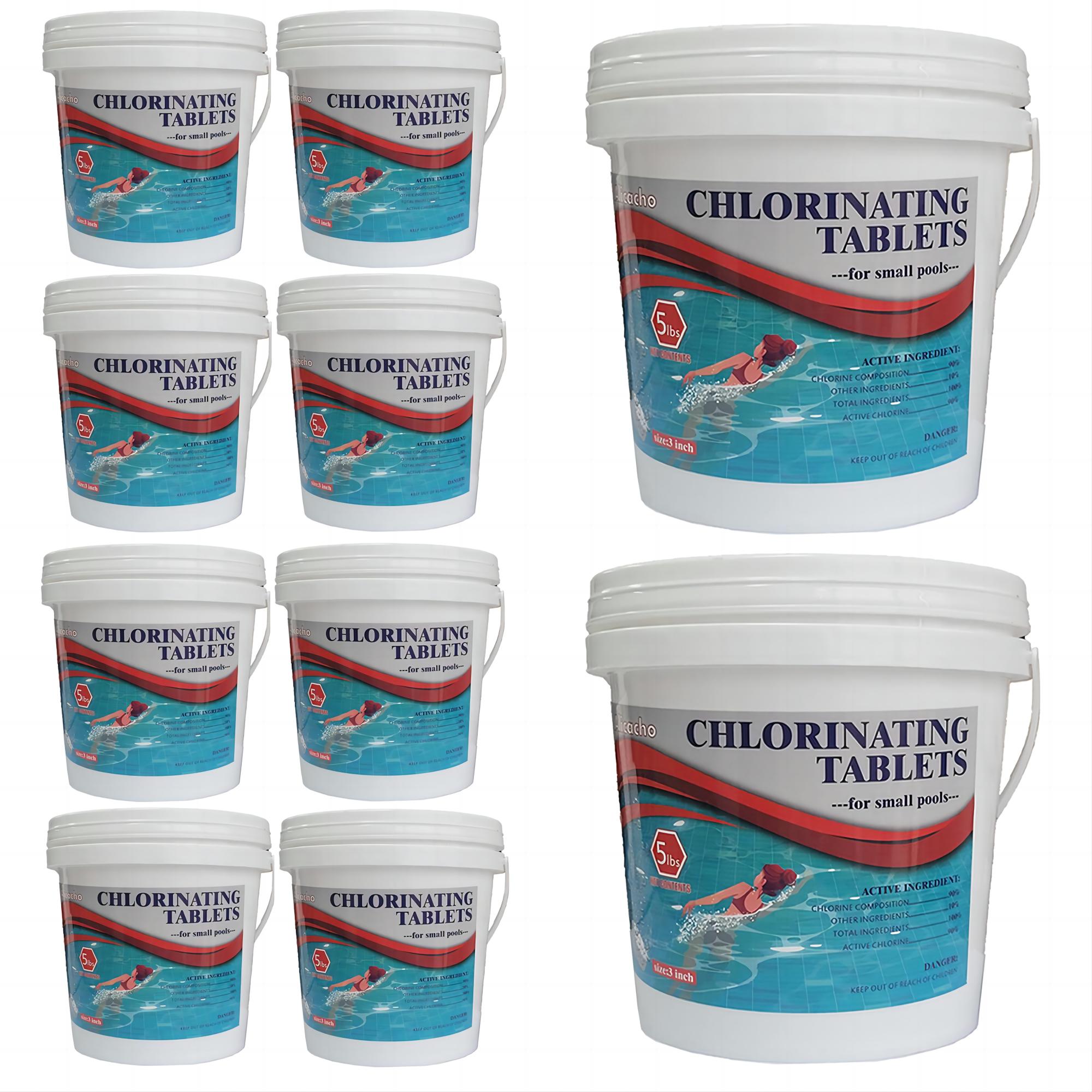When you are learning about how to balance pool water, there are lots of factors that you have to consider. You have to remember that your pool water is subject to changes all year round, and all that you introduce to it will affect it in so many different ways. To decrease pool water and pool damage, as well as lessen costs, it would be common not to change pool waters in years. And this could only be possible, if you know how to maintain it, as well.
Once all the chemicals in your pool are balanced, you can ensure a safe and healthy swimming environment all the time. Also, pool chemical balancing does not revolve around adding doses of chlorine only, it is about all the chemicals that may affect pool sanitization, and a lot more. Once chemicals are a little off, there is a huge possibility that your pool will be the breeding ground of bacteria, which is not good for your pool, its equipment, accessories, and of course, bathers.
In this article, we will learn the different levels of chemicals that you have to maintain and watch for, and of course, each of the chemicals as well. We are going to share with you the different steps on how to balance pool water, so you better read this article up to its last word, there is much to learn.
Part 1. What Are The Different Chemicals That Your Pool Needs?
For us to understand how to balance pool water, chemicals that you have to add to your pools must be figured out. Below, is the list of chemicals any pool owner should know.
1. Bromine Or Chlorine
When it comes to pool maintenance and operation, the first chemical that must be taken into consideration is chlorine. It is a sanitizer that removes contaminants, and bacteria which prevents the growth of algae. It can be presented in different forms such as liquid, granules, or tablets.
2. pH Increasers and Reducers
If we are going to define pH, it is the measure of the basicity or alkalinity and the acidity from a scale of 0-14. It must be put into mind that a range between 7.2 and 7.6 ppm must be maintained when it comes to pool water. There can be lots of effects once your pH is too high or too low, so it would also help if you are familiar with pH reducers and increasers that can help you in the future.

3. Pool Shock Treatments
Another important thing to know is pool shock treatments which can help you increase the chlorine content of your water quickly. This also offers deep cleaning since the chlorine concentration is higher than what you usually add to your pool water every day.

4. Calcium Hardness Increasers
Calcium hardness is also one of the most critical factors in maintaining pool water balance. Once the calcium hardness level is too high, cloudiness and growth of algae can be observed, and once it is too low, pool water can be corrosive and acidic. So, you have to be aware of some calcium hardness increasers that can help you later on.
5. Total Alkalinity Increasers And Reducers
Another chemical component that goes hand in hand with pH is total alkalinity. It will help stabilize pH, and must also be watched closely all the time.
6. Water Clarifiers
To achieve clear, very inviting, and clean pool water, water clarifiers are needed. They treat cloudy, hazy, and white pool water to improve the swimming experience of bathers. Usually, water clarifiers are in liquid form.
7.Cyanuric Acid or CYA
If you have an outdoor pole, and you want to make sure that your chlorine is being protected from the rays of the sun, you need CYA or cyanuric acid. Cyanuric acid levels should be between 30 and 50 ppm, and must also be watched closely as you balance pool water chemicals.
8. Algaecide
Once the chemicals in the pool water are already balanced, the growth of algae can be too far. However, there are instances where your pool is vulnerable to algae growth, so it would be nice to have an algaecide ready whenever you need it. Also, once you notice little building blocks of algae, you can already start adding algaecide to your usual shock routine.
Aside from all the chemicals mentioned, it would also be essential to secure chemical dosage equipment which will help you evenly distribute chemicals to your pool’s perimeter. Aside from securing the right levels, proper application is also a must. Furthermore, test kits are also useful since you have to identify chemical levels before adding increasers or decreasers, everything must always be sure and accurate to obtain spotless, safe, and healthy pool water.
Part 2. What Are The Steps To Balance Pool Water?
Now that we have enough learnings on the chemicals to use, the processes on how to balance pool water are also necessary to achieve a clean pool. Well, the steps on how to balance pool water are all easy to follow, and won’t be impossible to do. To start balancing the chemicals of your new pool, here’s what you have to do:
Step 1. Start testing, and adjusting the TA or total alkalinity of your pool water.
The first thing that you have to balance in your pool is TA. Since alkaline is a stabilizer of pH, its level will greatly affect how you balance pH. The TA range that you have to consider is between 80 and 120 ppm. If TA needs to be increased, you can use an alkalinity increaser like baking soda, and follow the rule of thumb that for every 10,000 gallons of pool water 25 pounds of alkalinity increaser must be added. In case you have to decrease TA, you can use muriatic acid or dry acid.
Step 2. Start testing and adjust the pH.
One of the most crucial factors in pool balancing is the pH, it must be in the range between 7.4 and 7.6 ppm. Learning how to balance pool water will keep your pool from having further damage including posing harmful effects to the health of the bathers. To increase pH, the rule of thumb that must be considered is that for every 10,000 gallons of pool water 6 ounces of soda as must be added to raise the pH by 0.2 ppm. To decrease the pH, pH decreasers like muriatic acid and sodium bisulfate must be used.
Step 3. You need to measure and adjust the level of your pool’s calcium hardness.
If you notice a white line or scale near your pool water line, it means that there is already calcium buildup. This can bring damage to your pool’s accessories, equipment, or your pool itself. You have to remember the ideal calcium hardness level which is in the range between 200 and 400 ppm. You can add calcium chloride if you want to increase the calcium hardness of your pool, just be sure to follow everything that you will see on the label. And if you want to decrease it, you can begin by partially draining your pool water, and then start refilling it once more with fresh water. You can also use flocculants to collect all the excess calcium, and then vacuum your pool to remove it.
Step 4. You can now add sanitizer to your pool water.
The next thing that you have to do is to add a sanitizer to your pool water. Adding one will help you maintain a pool that is free from any bacteria, and has pool water that is healthy and safe to swim in. One of the most common sanitizers when it comes to pools is chlorine. You also have the option to shock your pool to refresh and sanitize it. You have to be mindful of the levels of free chlorine and total chlorine in your pools when you are testing chlorine levels. When it comes to pool water, the ideal level of chlorine is 3 ppm.
Step 5. You have to check and adjust the level of CYA or the Cyanuric Acid.
To protect your pool’s chlorine from getting burned up by the sun adding CYA is needed. Although already present in doses of pool shock, there are instances that it is needed to add more to protect your chlorine levels. CYA level must be maintained in the range between 30 and 50 ppm.
Step 6. Start measuring the total dissolved solids in your pool water.
There is an acceptable level of TDS or Total Dissolved Solids in your pool and it is around 1000, also there are times when levels can be too high. Once the level of TDS in your pool is below 2000, there is no need to adjust, however, if it becomes higher than 2000, you have to drain small amounts of pool water and refill it with fresh water. Conduct pool water testing and execute adjustments activities until it reaches the allowed level.
Step 7. Shock your pool.
The last step is to shock your pool. It will help your pool refresh its water, achieving a nice, clean, and healthy pool.
Part 3. Conclusion
The key to having a nice and clean pool is by learning how to balance pool water, this will start everything. As long as a pool owner is aware of all his responsibilities as one, then it is not impossible to swim in a safe and healthy pool without worrying about anything.



